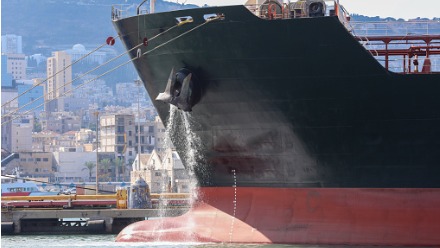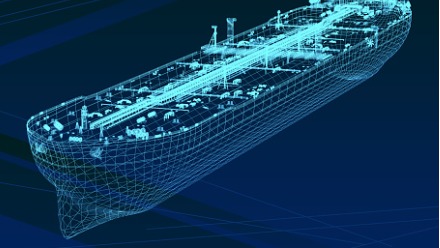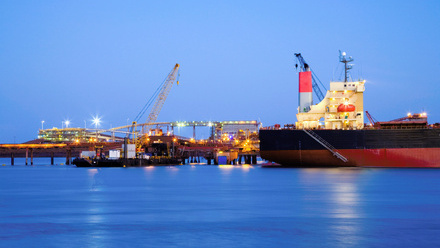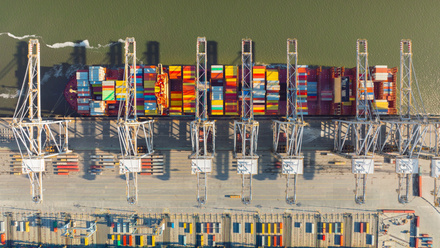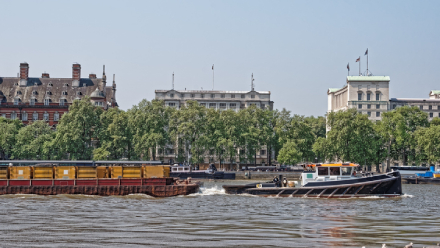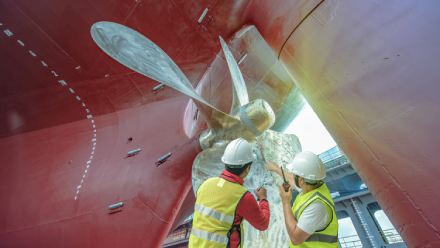History lesson: heavy lift pioneers Belships and Hansa
Both companies developed specialist vessels equipped with derricks to handle heavy loads including rail locomotives for shipping to India and Africa in the 1920s.
In the history of heavy lift shipping, two companies stand out as pioneers – DDG Hansa and Belships – and the impetus for their involvement were the railways. By the end of the First World War these were being expanded on a massive scale around the world. In Africa, Asia and South America especially, trains were needed to bring out resources from remote areas and to facilitate regional development.
Locomotives and rolling stock were manufactured in Europe, primarily Great Britain, and shipped abroad. However, no vessels then existed able to transport the heavy trains from Europe to the new railways as complete units; rather the methodology was to dismantle the steam engines, ship them in parts, and then reassemble them at the destination. This was time consuming, costly and liable to incorrect assembly.
The German approach
The German shipping company DDG Hansa was established on 3 December 1881 in Bremen by a consortium of 17 Bremen and two Bremerhaven companies to provide steamship connections for trade with Asia, the Baltic, and the Mediterranean. By the late 1920s, with a view to meeting the emerging need for the delivery of complete railway locomotives to British India, the company ordered the SS Lichtenfels, considered to be the first custom-built heavy lift ship.
Constructed by AG Weser in Bremen, it was equipped with a heavy lift derrick capable of handling 120 tons. Propulsion was by a three-cylinder triple-expansion engine plus a Bauer-Wach low-pressure exhaust steam turbine which drove the same shaft as the piston engine via double-reduction gearing and a Föttinger fluid coupling. The total output gave a speed of 13.7 knots. Lichtenfels was followed by three sister ships, the Geierfels, Freienfels and Uhenfels - all were built by AG Weser.
Hansa expanded over the following years to become one of the world’s largest heavy freight shipping lines and, despite Second World War losses, continued to be an innovator and with the Lichtenfels-series of 1954 was the first company to commission heavy lift ships equipped with Stülcken derricks, and also with a bridge sited right forward.
Norway gets involved
Meanwhile, Norwegian entrepreneur and master mariner Christen Smith had established his company, Skibsaktieselskabet Christen Smiths Rederi, in 1918 and ordered two new ships, the Belgot, delivered in 1920 with the Belfri following in 1921. However, the global shipping crisis of the early 1920s meant both vessels had to be laid up almost immediately.
Seeking employment for his ships, Smith realised the opportunity for shipping fully assembled locomotives and arranged his vessels with heavy duty derricks to handle even the largest locomotives in a single lift. As locomotive transports, Belfri and Belgot could carry eight forward of the central bridge and a further eight abaft it, all arranged athwartships.
The company’s concept became an immediate success and for more than a decade Smith dominated the heavy lift trade. The names of his vessels all had the prefix Bel and in shipping circles heavy lifters were soon commonly referred to as ‘Belships’.
Towards the end of the 1920s, Belships built an additional six ships for the transport of railway equipment. The ships were primarily designed for heavy transport but were nevertheless versatile, able to carry a variety of dry goods and were fitted with cranes for efficient cargo handling even in ports without advanced equipment. During the 1930s, Belships was the leading shipping company in the heavy lift and transport of both railway materials and heavy components for the oil refineries that were being built at that time in Asia and South America.
During the 1930s
In the economic downturns of the 1930s, the company was restructured and emerged in 1935 under a new name - Belships Co Ltd Skibs-A/S. However, a 1937 listing and restructuring resulted in three Lorentzen brothers becoming key shareholders. They soon assumed control of the company and the family would remain in charge for the next 80 years.
As the Second World War raged, the Belships fleet was in greater demand than ever before with the need to transport heavy military equipment efficiently over great distances. For the duration of the war, the fleet was under allied control. The post-war decade became Belships’ heyday as a heavy lift shipping company. The world was being rebuilt and locomotives and heavy machinery were needed everywhere. In addition, the four year-long war on the Korean peninsula created significant transportation needs.
In more recent times, the company has become an operator of bulk carriers while the heavy lift scene has seen a variety of new concepts emerge including specialist roll-on/roll-off and float-on/float-off designs.
Early heavy lifters
| Lichtenfels | Belfri | |
| Length | 160.45m | 116.3m |
| Beam | 18.94m | 16.0m |
| Depth | 8.49m | 5.4m |
| Tonnage | 7,457 grt | 4,671 grt |
| Speed | 13.7 knots | 10 knots |
To discover and discuss maritime history, a new IMarEST Connect group is now open.
Image: SS Lichtenfels; credit; shipspotting.com.
Tell us what you think about this article by joining the discussion on IMarEST Connect.

